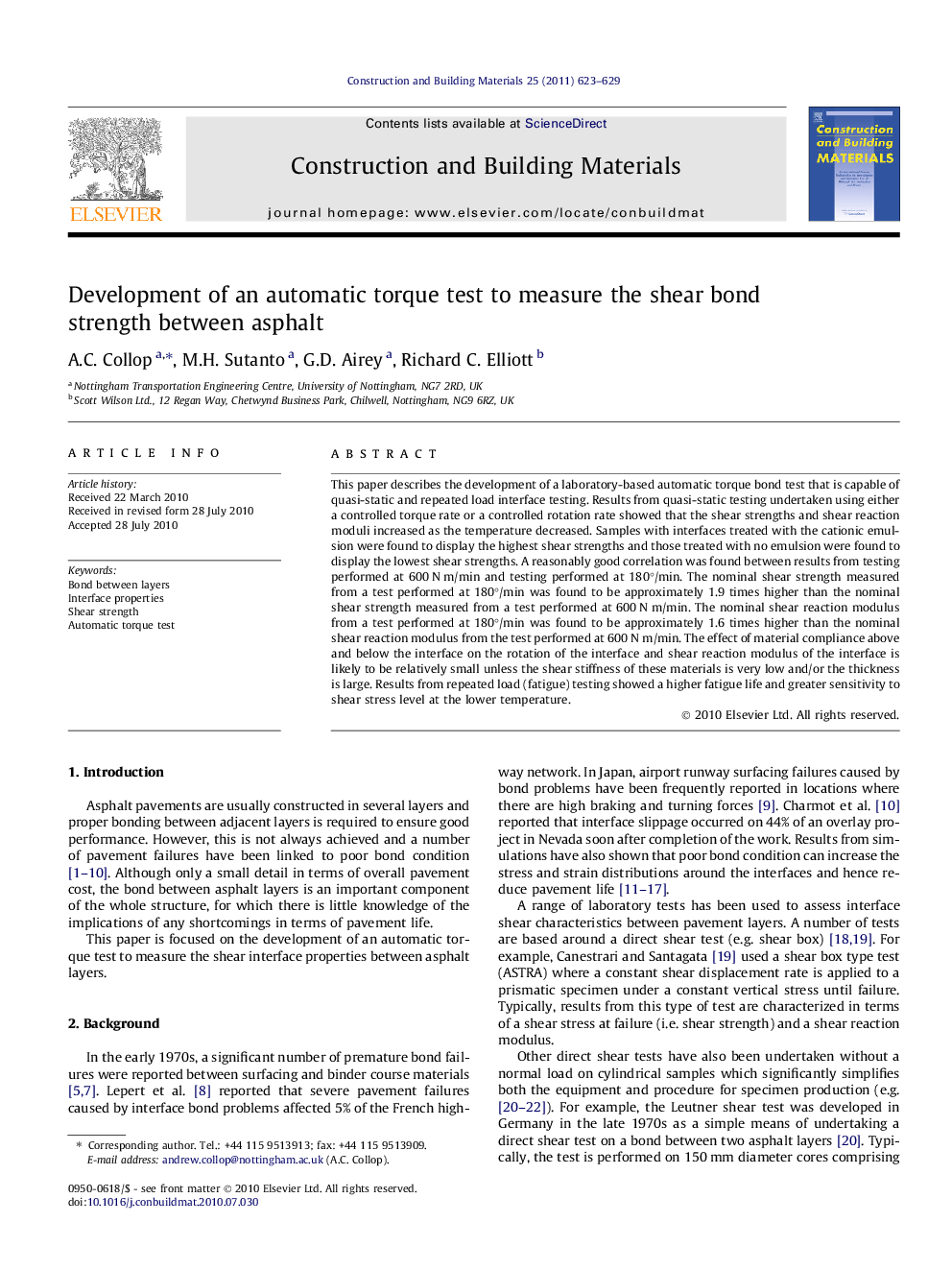| Article ID | Journal | Published Year | Pages | File Type |
|---|---|---|---|---|
| 259944 | Construction and Building Materials | 2011 | 7 Pages |
This paper describes the development of a laboratory-based automatic torque bond test that is capable of quasi-static and repeated load interface testing. Results from quasi-static testing undertaken using either a controlled torque rate or a controlled rotation rate showed that the shear strengths and shear reaction moduli increased as the temperature decreased. Samples with interfaces treated with the cationic emulsion were found to display the highest shear strengths and those treated with no emulsion were found to display the lowest shear strengths. A reasonably good correlation was found between results from testing performed at 600 N m/min and testing performed at 180°/min. The nominal shear strength measured from a test performed at 180°/min was found to be approximately 1.9 times higher than the nominal shear strength measured from a test performed at 600 N m/min. The nominal shear reaction modulus from a test performed at 180°/min was found to be approximately 1.6 times higher than the nominal shear reaction modulus from the test performed at 600 N m/min. The effect of material compliance above and below the interface on the rotation of the interface and shear reaction modulus of the interface is likely to be relatively small unless the shear stiffness of these materials is very low and/or the thickness is large. Results from repeated load (fatigue) testing showed a higher fatigue life and greater sensitivity to shear stress level at the lower temperature.
